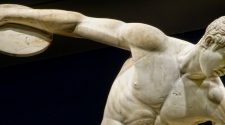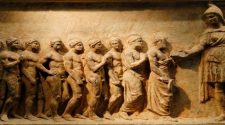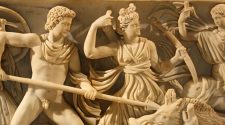People can only imagine how so much realism could ever be achieved by going back to the roots of Greek art and sculpture. Looking at and examining material and tools closely and also the exact techniques used to turn raw materials into outstanding masterpieces of art that some of still exist and being admired in Museums.
Closer investigation revealed that the early sculptures from porous limestone and bronze remained used even though marble became the choice of most artists. One of the most notable came from Naxos which were sparkling and close grained as well as Pentelic which were translucent and a rougher grain and turned honey coloured with age. Even though stone became the choice not only for easy workability but rather for decorative purposes as the majority of Greek sculptures were painted and not polished, many of these were simply to garishly for our refined tastes.
To quarry marble they used wooden wedges and bow drills in order to work at workable pieces. You will find that the large figures were hardly ever made from a huge block of marble but instead vital pieces like heads and arms sculpted separately and attached to the main body at a later stage using dowels. With the use of iron tools the artists would work at a single block from various directions by initially using a pointed tool to chip away large pieces that would be discarded.
After this various chisels like small and drills, flat chisels and five-claw chisels would have been used in sculpting fine details. The sculptures surface was finished with abrasive powders, but rarely would you find polishing on them. After this the attaching was done by splints or placed on a column and finishing was done through painting with lips, eyebrows, hair and skin were always bright and unusual colours. Glass, crystal and bone materials were used for eyes while bronze would be used for adding jewellery, helmets, spears, etc.











No Comment